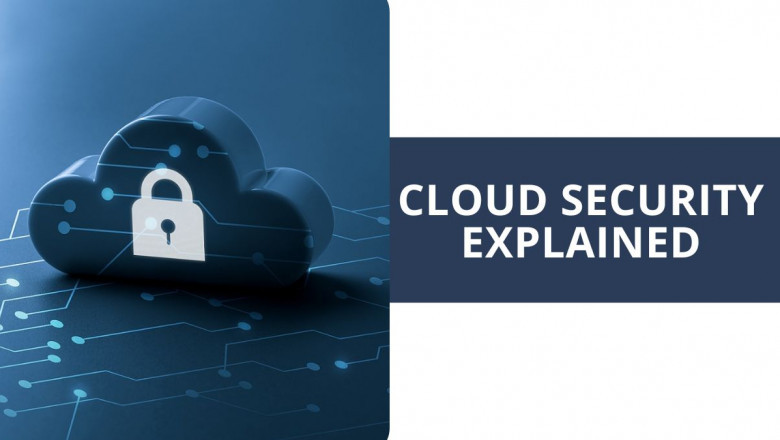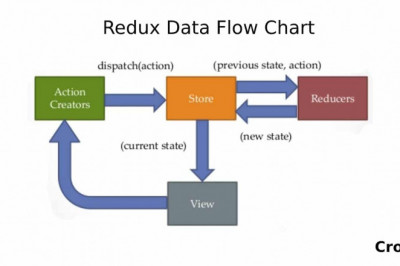views

Cloud Security Explained
Cloud security is the protection of electronic information that is stored on clouds. It is a sub-domain of information security and includes the controls that are used to protect data, applications, and infrastructure associated with cloud computing.
The shared nature of cloud computing resources raises new security challenges that must be addressed. These challenges include ensuring the confidentiality, integrity, and availability of data and applications, as well as identity and access management, and compliance.
To address these challenges, organizations need to consider security at each layer of the cloud stack—infrastructure as a service (IaaS), platform as a service (PaaS), and software as a service (SaaS)—and throughout the cloud life cycle, from design and deployment to operation and decommissioning.
There are a number of security concerns that need to be considered in any cloud computing environment.
These can be broadly classified into three categories:
1) Data security concerns the confidentiality, integrity, and availability of data that is stored or processed in the cloud.
2) Application security concerns the security of the applications that are running in the cloud.
3) Infrastructure security concerns the security of the cloud infrastructure, including the hypervisor, network, and storage.
Organizations need to consider all three of these categories when designing and implementing security for their cloud computing environment.
Data security is perhaps the most important concern in any cloud computing environment. Data stored in the cloud is often sensitive or confidential, and it is critical that this data is protected from unauthorized access or modification. integrity checks can help to ensure that data has not been tampered with, while encryption can help to protect data from unauthorized access.
Application security is also a critical concern in cloud computing. Organizations need to ensure that the applications running in their cloud environment are secure and free from vulnerabilities. This includes both the applications that are developed by the organization and any third-party applications that are used.
Infrastructure security is also a key concern in cloud computing. The cloud infrastructure is a complex system, and it is critical that this system is secure. This includes the hypervisor, the network, and the storage.
Organizations need to consider all of these security concerns when designing and implementing security for their cloud computing environment. They should also consider using a security provider that specializes in cloud security.
To mitigate against cloud security risks, organizations should implement a comprehensive security strategy that includes the following elements:
• Identity and access management: Users should be authenticated and authorized to access only the data and applications they need. Implementing security solutions like FIDO authentication helps make user logins more secure. The linked article on FIDO vs FIDO2 explains more.
• Data encryption: Data should be encrypted both in transit and at rest.
• Security monitoring and logging: Activity should be monitored and logged to detect and investigate potential security incidents.
• Vulnerability management: Systems should be regularly scanned for vulnerabilities and patched in a timely manner.
• Disaster recovery: A plan should be in place to recover data and systems in the event of a catastrophic event.
Cloud security is a complex and ever-evolving issue. By understanding the risks and taking steps to mitigate them, organizations can reap the benefits of cloud computing while keeping their data and systems safe.
What is cybersecurity?
The term “cybersecurity” refers to the practice of protecting electronic information by mitigating information risks and vulnerabilities. Cybersecurity includes the processes and technologies used to protect electronic data from unauthorized access or theft. Cybersecurity is a growing field that is constantly evolving to keep pace with the ever-changing landscape of the internet and the threats that come with it.
The goal of cybersecurity is to protect information from unauthorized access or theft. Cybersecurity includes the processes and technologies used to protect electronic data from unauthorized access or theft. Cybersecurity is a growing field that is constantly evolving to keep pace with the ever-changing landscape of the internet and the threats that come with it.
There are a variety of cybersecurity risks that organizations face. These risks can come from a variety of sources, including hackers, malicious software, and even human error. Cybersecurity risks can lead to a loss of data, reduced productivity, and reputational damage.
Organizations can mitigate cybersecurity risks by implementing security measures such as firewalls, intrusion detection systems, and encryption. Additionally, organizations should educate their employees on cybersecurity best practices and have a plan in place to respond to a breach.












